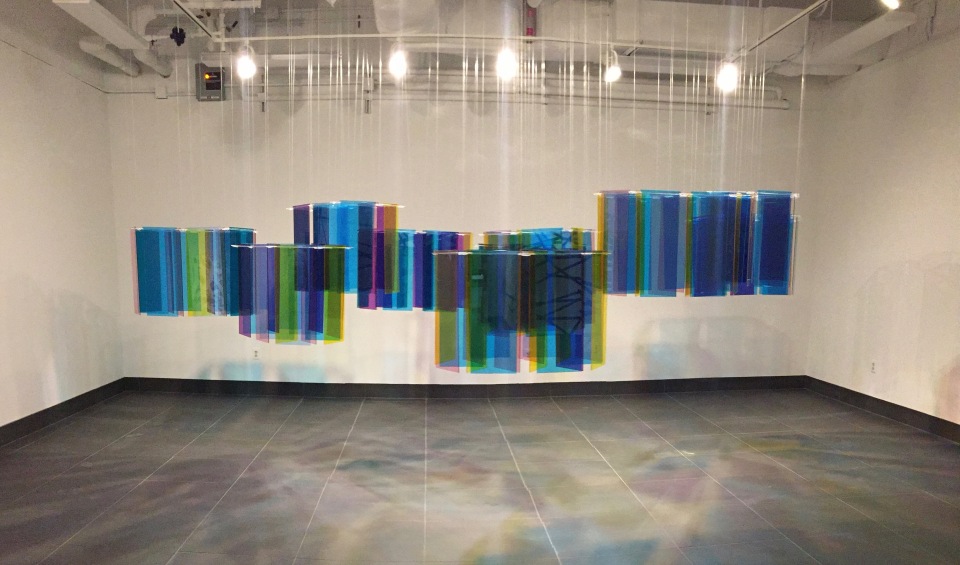Transitions of Light
Melissa Borrell of the Texas Sculpture Group created Prismatic which is installed at the Texas State University Survey Gallery in San Marcos, Texas. This is a suspended acrylic installation that explores how the layering of light and color can contribute to a meaning related to home. Clean, geometric lines are formed by vertically suspended clusters of coloured acrylic panels. Each panel is one single colour. The installation features primarily cool colours, as well as a few touches of orange, green, yellow and pink. All colors work harmoniously with each other to bring a sense of unity through their variation. These panels hang from horizontally suspended clear acrylic sheets which resemble a plastic six pack soda ring. As this work was created by the Texas Sculpture Group, a sense of unity in the work via the transparent quality and merging of colors among the hanging panels parallels that of the demographics in Texas. People from diverse socio-economic backgrounds and cultures live in or are moving to Texas. When I looked at these panels, I thought of how the people in Texas try to blend together, making up a proud community of people which sometimes rubs on itself.

As I gazed through the layers of transparent, coloured acrylic, I found in my line of sight new shades which only exist together and not in any single sheet. The layers create depth of colour, sometimes to a point through which can no longer be seen. This defined medley of colour assumes a deeper value when looking through a thicker cluster and a lighter value when looking through a thinner one. The deeper and lighter values brought the Texan community back into mind by showing that although there is a society for the majority of people in Texas, there remains a minority who is cast out of the mind of the majority. In Prismatic, however, the lighter values are made to stand out instead of be cast into the dark and enveloping majority panels.
Additionally, the panels not only absorb, but also translate a reflection of the environment and viewer around them into their own monotone colours, furthering the theme of unity which is so deeply submersed in the work. The sense of unity is accomplished by forcing the viewer to see themselves in the panels. How I felt about this piece is not only due to personal experiences and taste, but also my own level of self-esteem. Seeing my own face reflected in and among the panels made me feel invited to become one with the installation the way I am one with myself. Hearing the comment of another viewer, however, reminded me that some people are dissatisfied by their own reflection, and thus are repulsed by Prismatic. One of the faults of this piece is that many people are not pleased with themselves and will not be able to see past their own face and into the blended demographic meaning of the installation. Yet it is precisely this flaw that makes it great: it shows human nature— some can’t see past themselves and think of others.
-Natasha
(516)
